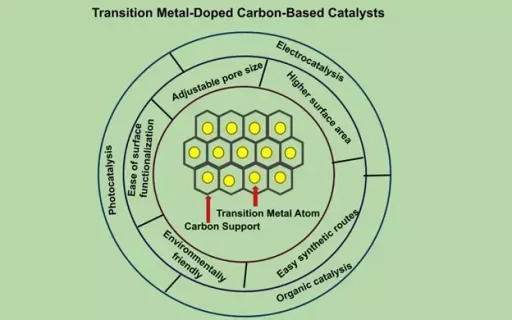The Quest for Sustainable Catalysis through Transition Metal Doped Carbon-based Single-Atom Catalysts
Authors
- Chamalki Madhusha 1
- Madhavi De Silva 1, 2
- Imalka Munaweera 1, 3
- Chandani Perera 4
-
Nilwala Kottegoda
*
 1, 2
1, 2
Abstract
Single-atom catalysts have recently received much scientific attraction as sustainable catalysts due to their greater activity and selectivity arising from the uniform distribution, electronic properties, and quantum mechanical interactions at the nanoscale of single atoms coupled with interactions at the metal-support interfaces. Carbon-based materials are an excellent support material for single-atom catalysts owing to their inherent properties such as adjustable pore size, high surface area to volume ratio, and ease of surface functionalization. The interactions at the single atom-carbon support interfaces give rise to the extraordinary catalytic activity in carbon-based single metal catalysts thus opening doors for a wide range of sustainable applications. This review focuses on the evolution of carbon-based single-atom catalysis covering different types of carbon substrates, usage of different single atoms with special attention to transition metals, and its wide range of applications including photocatalysis, organic catalysis, and electrocatalysis followed by the future perspectives on carbon-based single-atom catalysts.
Highlights
- Transition metal-doped carbon-based SAC are popular in catalysis.
- Carbon-based SAC are environmentally friendly and sustainable catalysts.
- SAC can be synthesized through different physical or chemical processes.
- DFT calculations on SAC are important in elucidating stable SAC structures.
- SAC are widely used in photocatalysis, electrocatalysis and organic catalysis.




